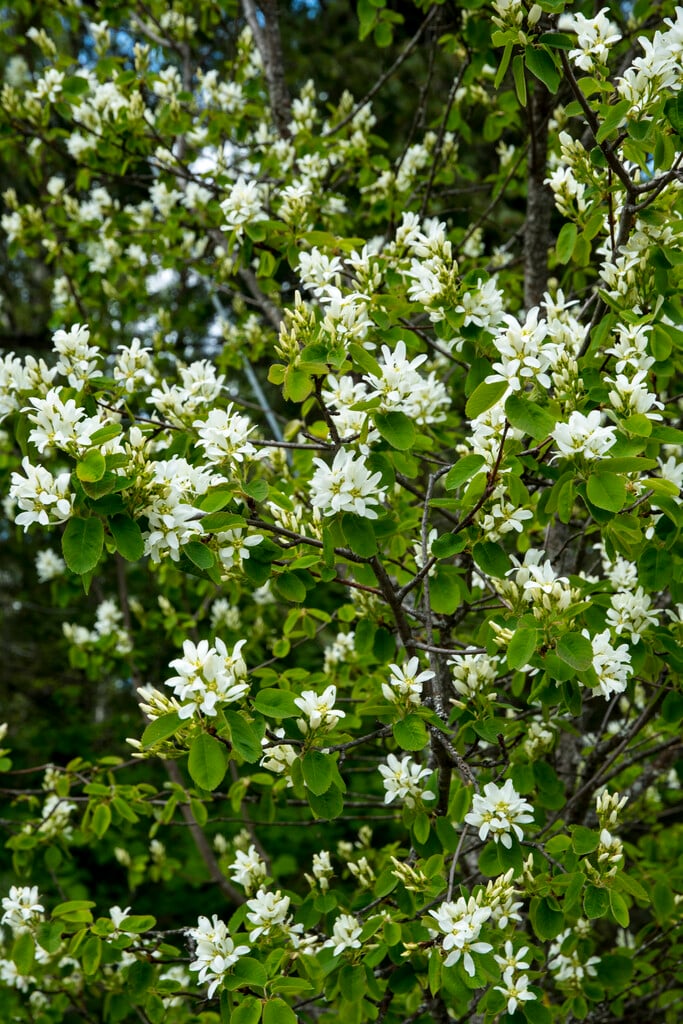Amelanchier alnifolia
alder-leaved serviceberry
A medium to large, bushy, deciduous and upright shrub or small tree of open habit, that can sucker and form small colonies. Bronze-tinged young leaves that are oval or circular in shape turn orange and red in autumn. Five-petalled, white flowers about 2-3cm across, appear in spring as the leaves unfurl and expand. The edible fruits are small, red-purple to blue-purple berries about 10mm in diameter, closely resemble a blueberry, and are often eaten by birds and squirrels
Size
Ultimate height
4–8 metresTime to ultimate height
10–20 yearsUltimate spread
2.5–4 metresGrowing conditions
Moisture
Well–drained, Moist but well–drainedpH
Acid, NeutralColour & scent
| Stem | Flower | Foliage | Fruit | |
| Spring | White | Bronze | ||
|---|---|---|---|---|
| Summer | Green | Green Red Purple | ||
| Autumn | Red Orange Yellow | Purple Red Blue | ||
| Winter | Purple Black Blue |
Position
- Full sun
- Partial shade
Aspect
East–facing or North–facing or South–facing or West–facing
Exposure
Exposed or Sheltered Hardiness
H7Botanical details
- Family
- Rosaceae
- Native to GB / Ireland
- No
- Foliage
- Deciduous
- Habit
- Suckering, Columnar upright
- Potentially harmful
- The berries are edible, but this tree is usually grown as an ornamental plant rather than to provide a crop of fruit in the UK
- Genus
Amelanchier are small deciduous trees or shrubs with showy white flowers in early spring, red to purple fruits and often good autumn colour
- Name status
Correct
- Plant range
- NW N America
How to grow
Cultivation
Grow in moist, lime-free, well-drained soil in sun or part shade. The best autumn colour is achieved when grown in full sun. Fruits are enjoyed by birds.
Propagation
Propagate by seed, softwood cuttings or semi-ripe cuttings in summer or layering.
Suggested planting locations and garden types
- Cottage and informal garden
- City and courtyard gardens
- Low Maintenance
- Hedging and screens
- Edible fruit
Pruning
Pests
Generally pest-free
Diseases
May be susceptible to fireblight. In dry soil conditions or strong winds, may be susceptible to leaf scorch.
Get involved
The Royal Horticultural Society is the UK’s leading gardening charity. We aim to enrich everyone’s life through plants, and make the UK a greener and more beautiful place.
